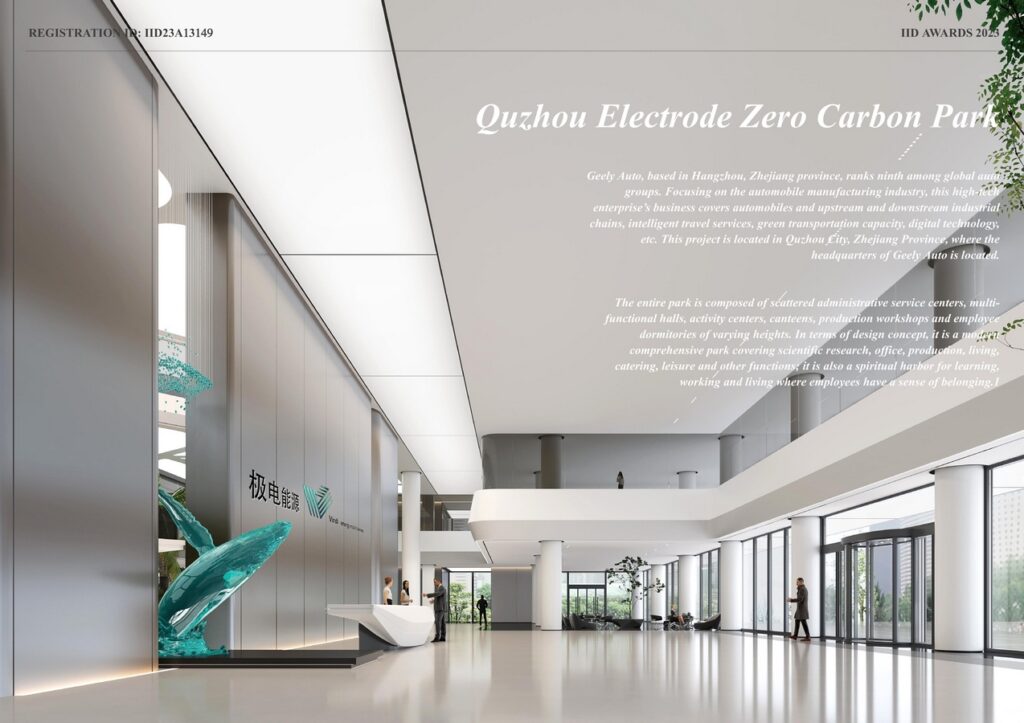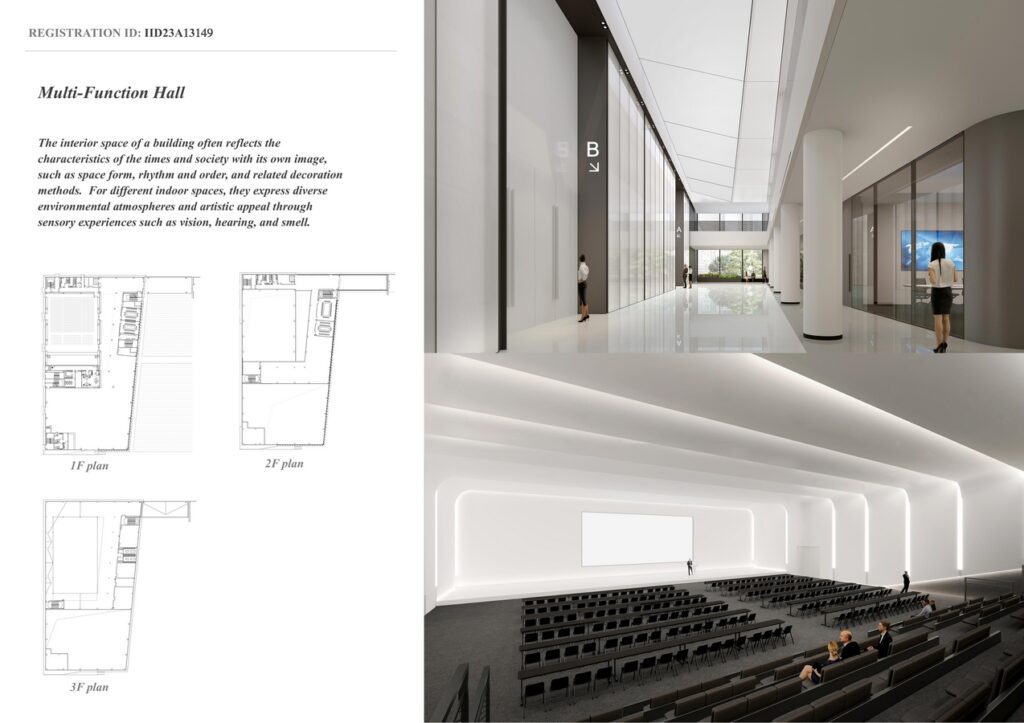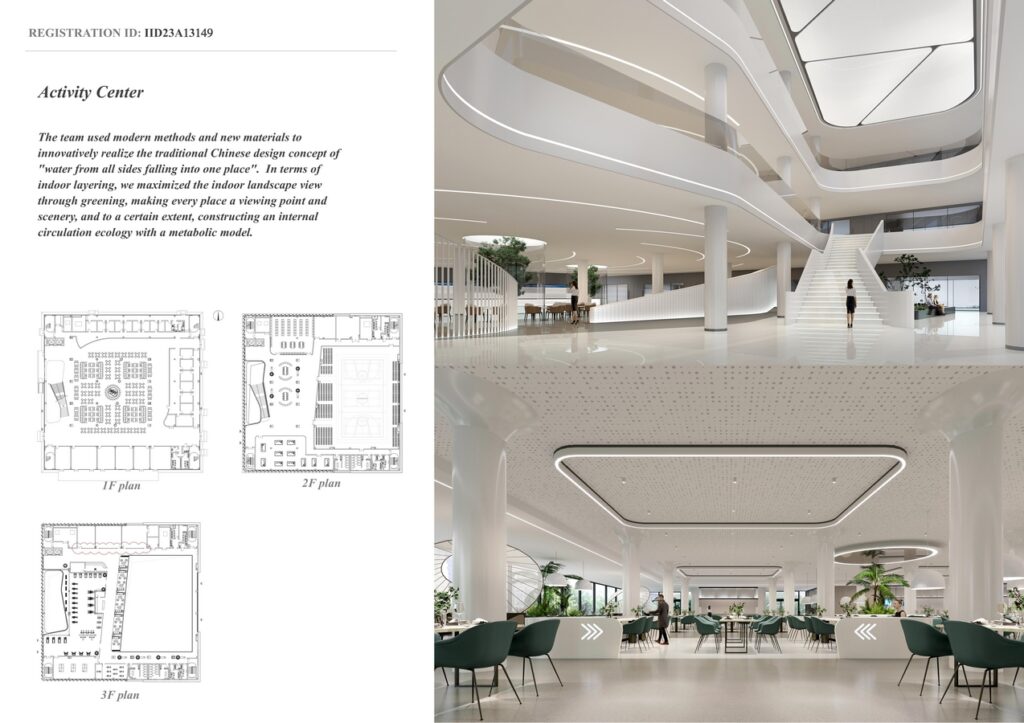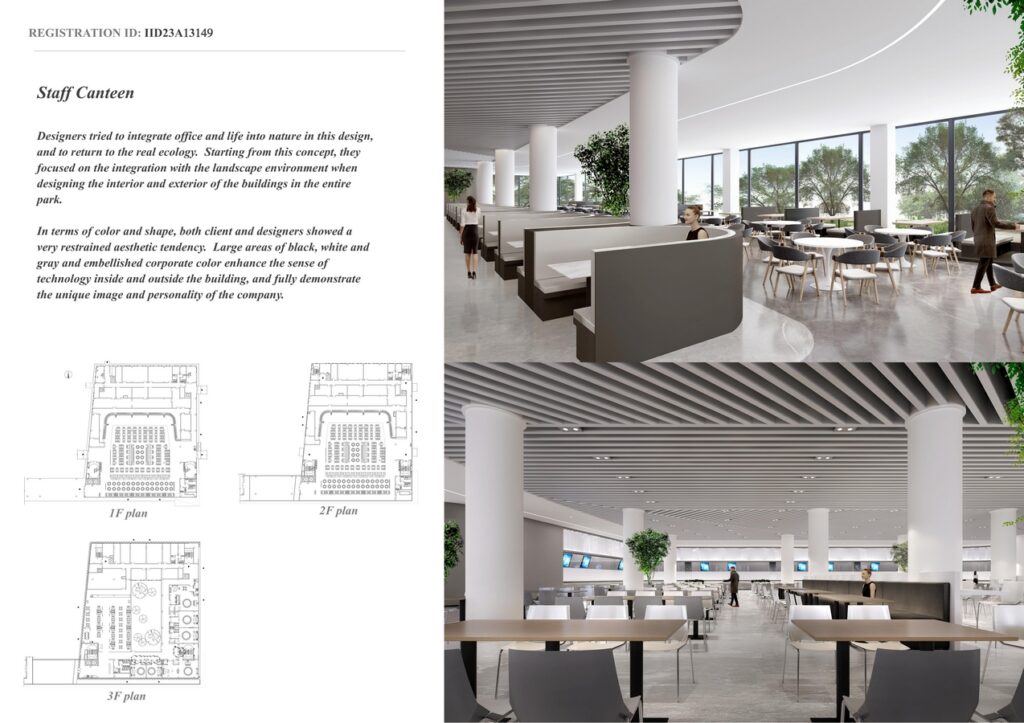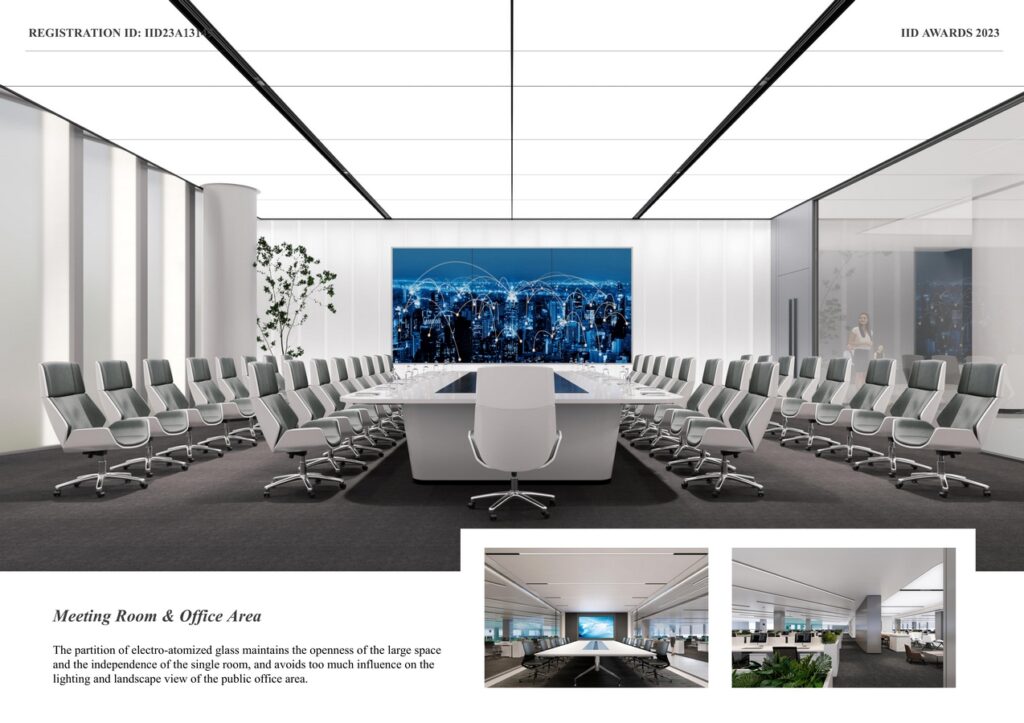Geely Auto, based in Hangzhou, Zhejiang province, ranks ninth among global auto groups. Focusing on the automobile manufacturing industry, this high-tech enterprise’s business covers automobiles and upstream and downstream industrial chains, intelligent travel services, green transportation capacity, digital technology, etc. This project is located in Quzhou City, Zhejiang Province, where the headquarters of Geely Auto is located. The entire park is composed of scattered administrative service centers, multi-functional halls, activity centers, canteens, production workshops and employee dormitories of varying heights. In terms of design concept, it is a modern comprehensive park covering scientific research, office, production, living, catering, leisure and other functions; it is also a spiritual harbor for learning, working and living where employees have a sense of belonging.
International Interior Design Awards 2024: Entries Open!
Take your work to the next level. Register Now…
Gold 🏆 Winner
International Interior Design Awards 2023
Quzhou Electrode Zero Carbon Park
Corporate Interior Concept
Firm
QuzhouJidian E-Mobility Technology Co. Ltd.
Architect/Designer
FU Xuezhi, Yuan Ye
Design Team
Jin Xixiang, Li Dajun, Yang Songlin, Cao Mengyao, Fan Shengyang, Jin Lanxi, Pan Chenyang, Ma Junbao, Zhu Kaixiang, Yang Shu
Location
Zhejiang Province
Country
China
Photographer/Copyright
©ANHUI YIYUAN ARCHITECTURAL ART DESIGN CO.,LTD
The team started interior design at the outset of architectural design, progressing in tandem with architecture and landscaping. At the administrative service center, the design used modern methods and new materials to innovatively realize the traditional Chinese concept of “water from all sides falling into one place”. In terms of indoor layering, the landscape view through greening was maximized, making every place a viewing point and scenery, and to a certain extent, constructing an internal circulation ecology with a metabolic model. In addition, based on client’s corporate image and functional requirements, the design fully coordinated the few independent single rooms. The partition of electro-atomized glass maintains the openness of the large space and the independence of the single room, and avoids too much influence on the lighting and landscape view of the public office area. In terms of color and shape, both clients and designers showed a very restrained aesthetic tendency. Large areas of black, white and gray and embellished corporate color enhance the sense of technology inside and outside the building, and fully demonstrate the unique image and personality of the company.
The design tried to integrate office and life into nature, and to return to the real ecology. Starting from this concept, designers focused on the integration with the landscape environment when designing the interior and exterior of the buildings in the entire park. The indoor layered landscape and microcirculation of the administrative service center put forward higher requirements on the structure, ventilation and lighting of the building. The above requirements are also a big challenge when designing interiors, arranging functional modules around the entire landscaped atrium, or borrowing scenery from the outdoor landscape of the park.
The interior design scheme condensed the professional knowledge of architecture, landscape, curtain wall, etc., and effectively reduces energy consumption by rationally utilizing natural light and the park environment. This not only responds to the low-carbon life advocated by the UN Climate Change Conference, but also conforms to the ancient Chinese philosophy of harmony between man and nature. When choosing building materials, soft decoration and lamps, durability and renewability are our primary considerations; the addition of photovoltaic products and energy storage town save energy and reduce emissions at the source. In terms of interior space planning, designers considered the future development direction of the enterprise and endowed most of the interior areas with the potential of re-layout and functional iteration.




